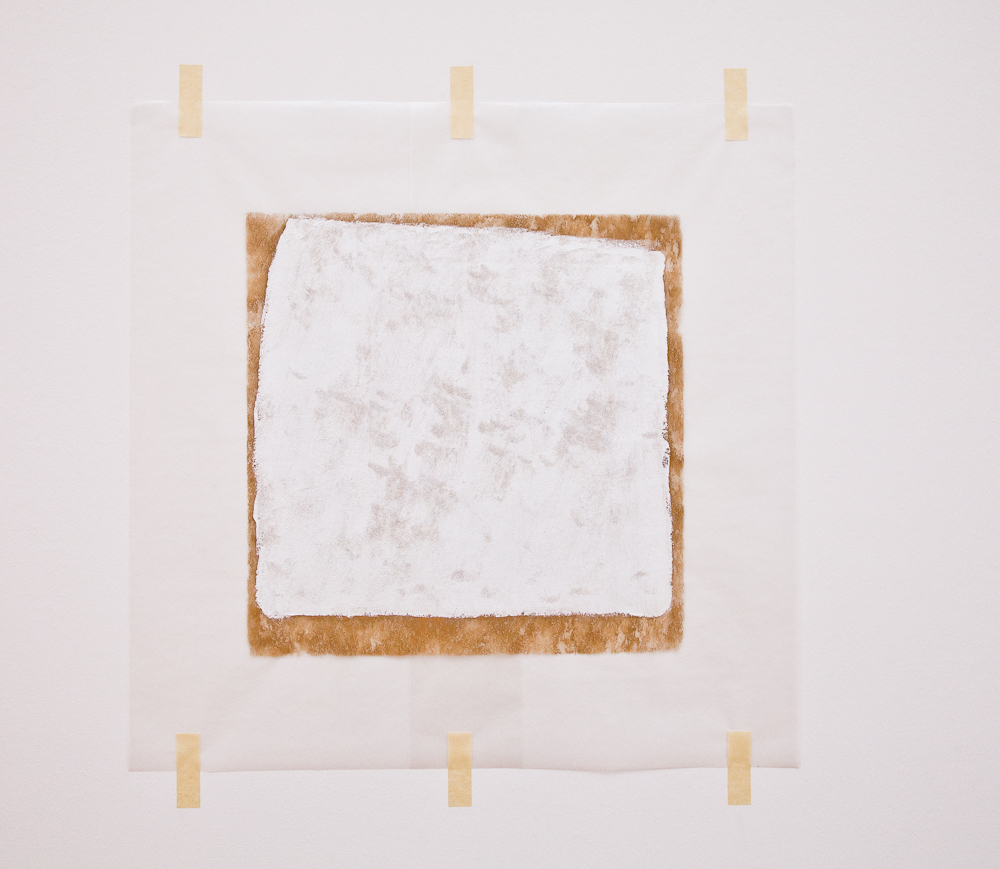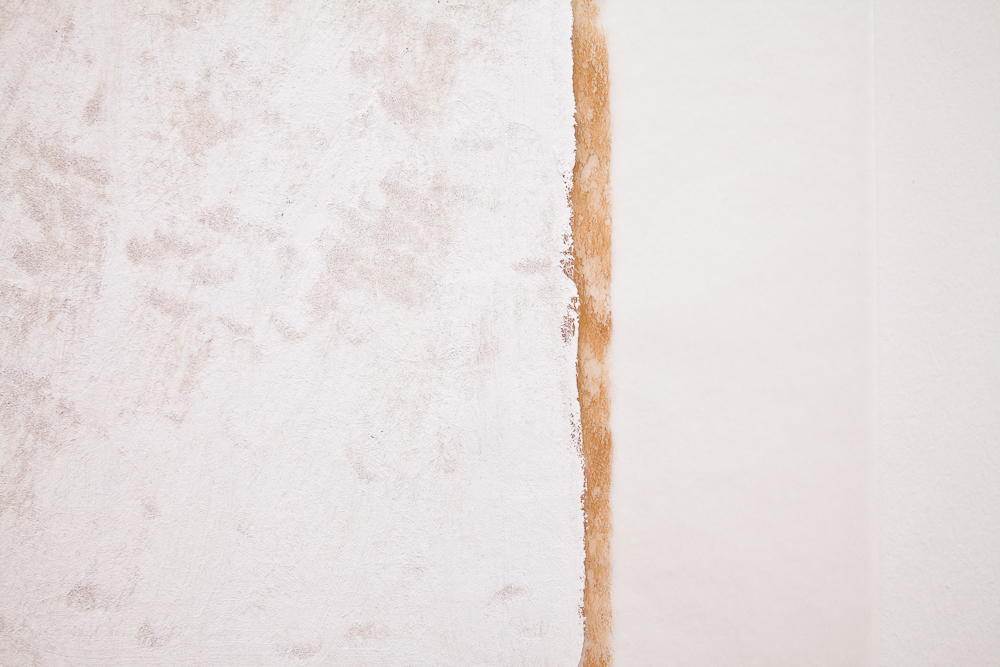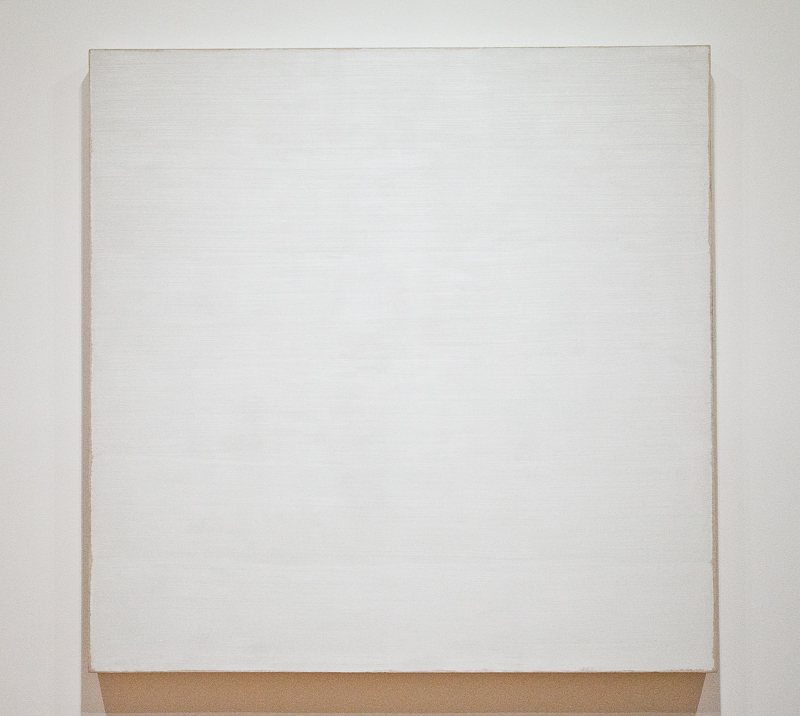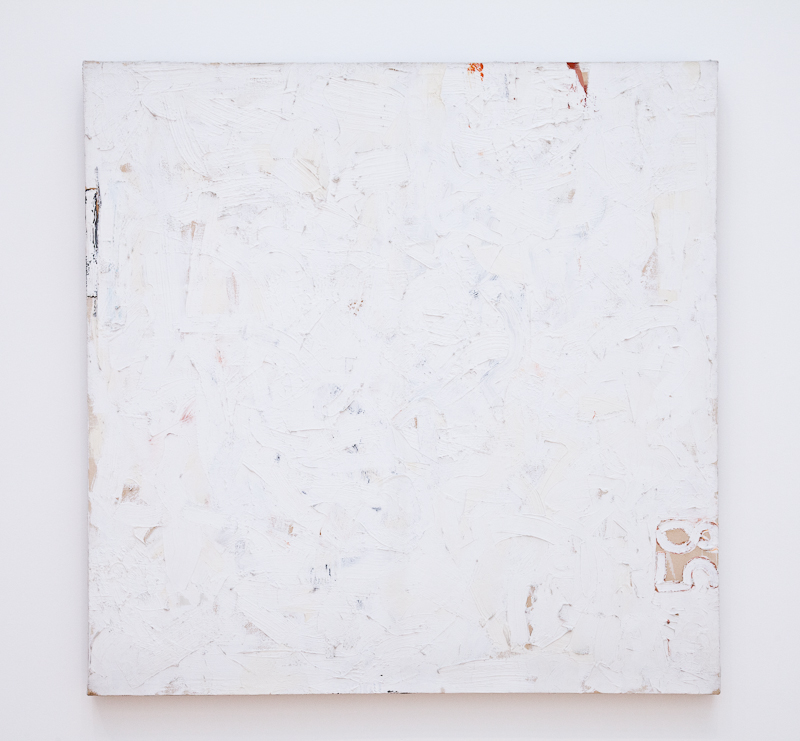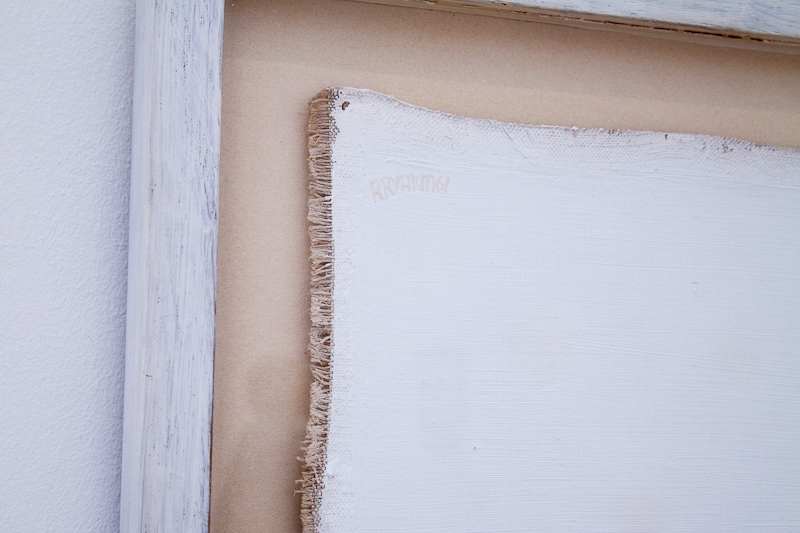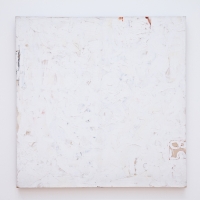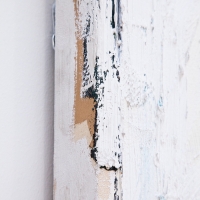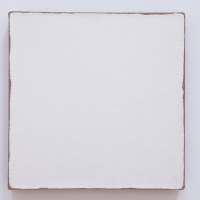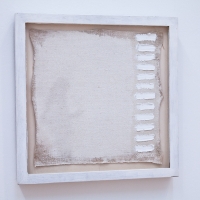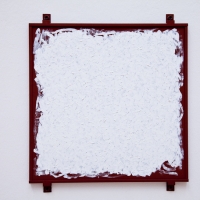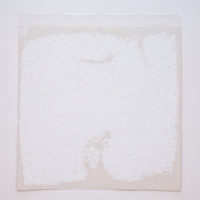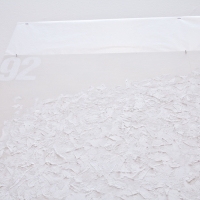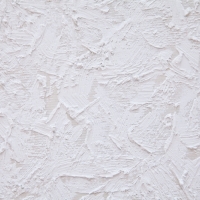What? I have a blog?
Well, better get to it then!
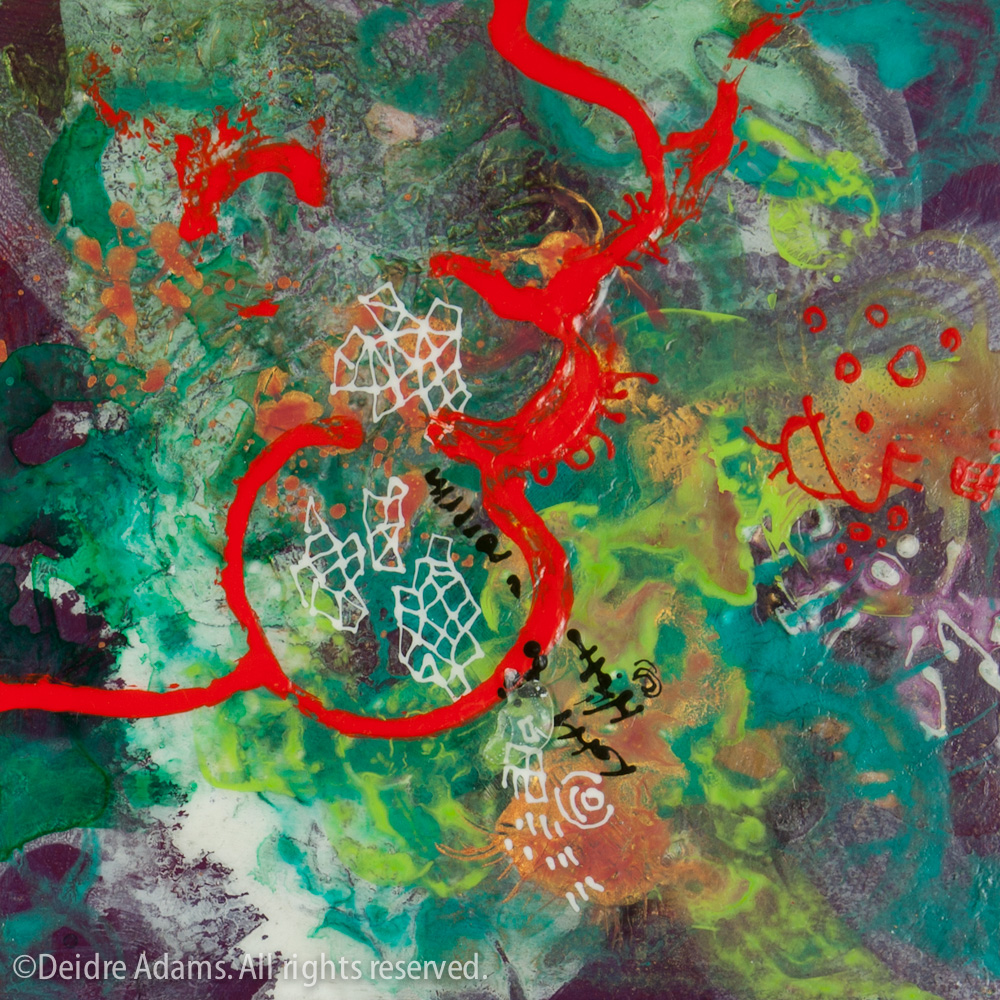 Primordial No. 6, 8 x 8 inches, acrylic on panel, ©2012 Deidre Adams
Primordial No. 6, 8 x 8 inches, acrylic on panel, ©2012 Deidre Adams
So back in April, I made a big deal about my new web site/blog design, then I fell off the face of the earth, or so anyone who reads my blog may have thought. I did get a little sidetracked there for awhile by things over which I have very little control. But although I’ve been quiet as far as blogging, I have not been idle. In the 153 days since my last post, I’ve done these things:
- Attended the SDA/SAQA joint conference in Philadelphia March 30–April 1, which was held concurrently with FiberPhiladelphia 2012, an “international biennial and regional festival for innovative fiber/textile art.” There were over 40 exhibitions of top-notch fiber art available to be seen, including the outstanding Inside/Outside the Box. I saw so much great artwork and took so many pictures, I became completely overwhelmed and never got around to posting any of them. I still might at some point, even though it’s super old news now, because the work is just so great.
- Also spent a couple of days in New York with my friend Susan, and saw some art exhibitions there. Plus got to weave my very first scarf in the beautiful weaving studio at the Newark Museum. Susan is a weaver who attends their ongoing weaving series, and on the day I accompanied her to the studio, they very kindly asked me if I’d be interested in making a scarf on a loom that was already warped and ready to go. Who could pass that up!?

- Attended the WARP (Weave a Real Peace) annual meeting & Colorado Weaver’s Day in Boulder. (Am I thinking of taking up weaving when I already have way too many things I like to do? No, not exactly, but I have been thinking about some non-traditional techniques that I might want to experiment with in my work.)
- Finished 21 paintings, to be posted in the coming days. (OK so granted, most of them were really small, but I still claim credit.)
- Reworked 3 older paintings that I had never been satisfied with, and started several new ones.
- Sold and delivered 2 paintings for the new Hospitality Learning Center on the campus of Metropolitan State University of Denver.
- Shipped Composition IX to Taiwan for exhibition at the Taiwan International Quilt Exhibition 2012 during August-October this year.
- Finished works for 2 different fund-raisers; more on those soon.
- Sent in 4 works for the SAQA Showcase exhibition at the International Quilt Study Center & Museum at the University of Nebraska–Lincoln, which opened Aug. 3 and runs through Feb. 24, 2013. (photo courtesy International Quilt Study Center & Museum.)

- Finished my piece for Seasonal Palette, a juried exhibition for which selected artists have each made a textile piece depicting a particular season. More on this later.
- Finished 2 textile pieces for possible entry into Quilt National, working on a third, but it’s refusing to cooperate. Deadline is in 6 days.
- Also (note—totally off topic) joined a CSA to get great fresh organic fruits & veggies every week, so I have been learning how to cook – something I’ve never enjoyed until lately, when I just decided no more meat. If the men want meat, they can bloody well cook it themselves. I bought a pressure cooker and dusted off the Cuisinart, and learned how to make hummus, vegetable stock & soups, pesto, pizza dough, and killer pie crust, all from scratch. The peaches have been outstanding this year, so I had to make a couple of pies.
There now, all caught up!
Oh, and just because there is more happening in the world outside of my own little domain, here are some other things that happened in those 153 days:
“June broke or tied 3,215 high-temperature records across the United States. That followed the warmest May on record for the Northern Hemisphere – the 327th consecutive month in which the temperature of the entire globe exceeded the 20th-century average, the odds of which occurring by simple chance were 3.7 x 10-99, a number considerably larger than the number of stars in the universe.” (1)
Devastating drought in the U.S., India, and eastern Europe will mean sharp increases in food prices throughout the world. The dollar value of crops lost in the U.S. alone could reach $20 billion. (2)
About 3,800,000 more people around the world died of hunger or hunger-related causes. (3)
Meanwhile, a study has revealed that the global super-rich are hiding at least $21 trillion (that’s 21,000 billion) in tax havens, with fewer than 100,000 people accounting for almost half of it. (4)
Nearly half a million U.S. homes entered foreclosure. (5)
Companies continue to hoard excess cash, “vastly more cash than is needed to finance their operations,” (6) while the number of jobs added to the economy each month continues to be less than needed to even keep up with population growth. (7)
13,224 people in the United States have died from gun violence, another 27,816 were shot but survived. (8)
In “Support Our Troops!™” news, there are now over 870,000 veterans waiting to hear back from the VA on their disability claims, with delays of over a year in the worst cases. One VA office in Winston-Salem, North Carolina, had such an immense load of paperwork, it was threatening the structural integrity of the building. (9)
And so on and so forth.
____
Why do I bother mentioning all of these terrible statistics? Because I’m so torn about all of this. On some days, I think I really want to try to make a difference in the world, and other days it just seems utterly hopeless. I’ve joined a couple of groups that were working on some activism, but each time it seems people are drawn away and the thing dies a quiet death. I’m not a leader – never have been, never will be. That’s just a fact. Is it enough to just continue to make art that makes me happy? Should I be doing something I don’t enjoy as much but has a more noble intent? Is there some way I can combine all of this? I don’t have an answer. I’m tossing around several ideas for new bodies of work to address my inner turmoil on this, and hope to have something to show you in the not-too-distant future.


